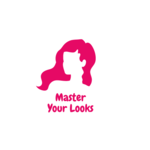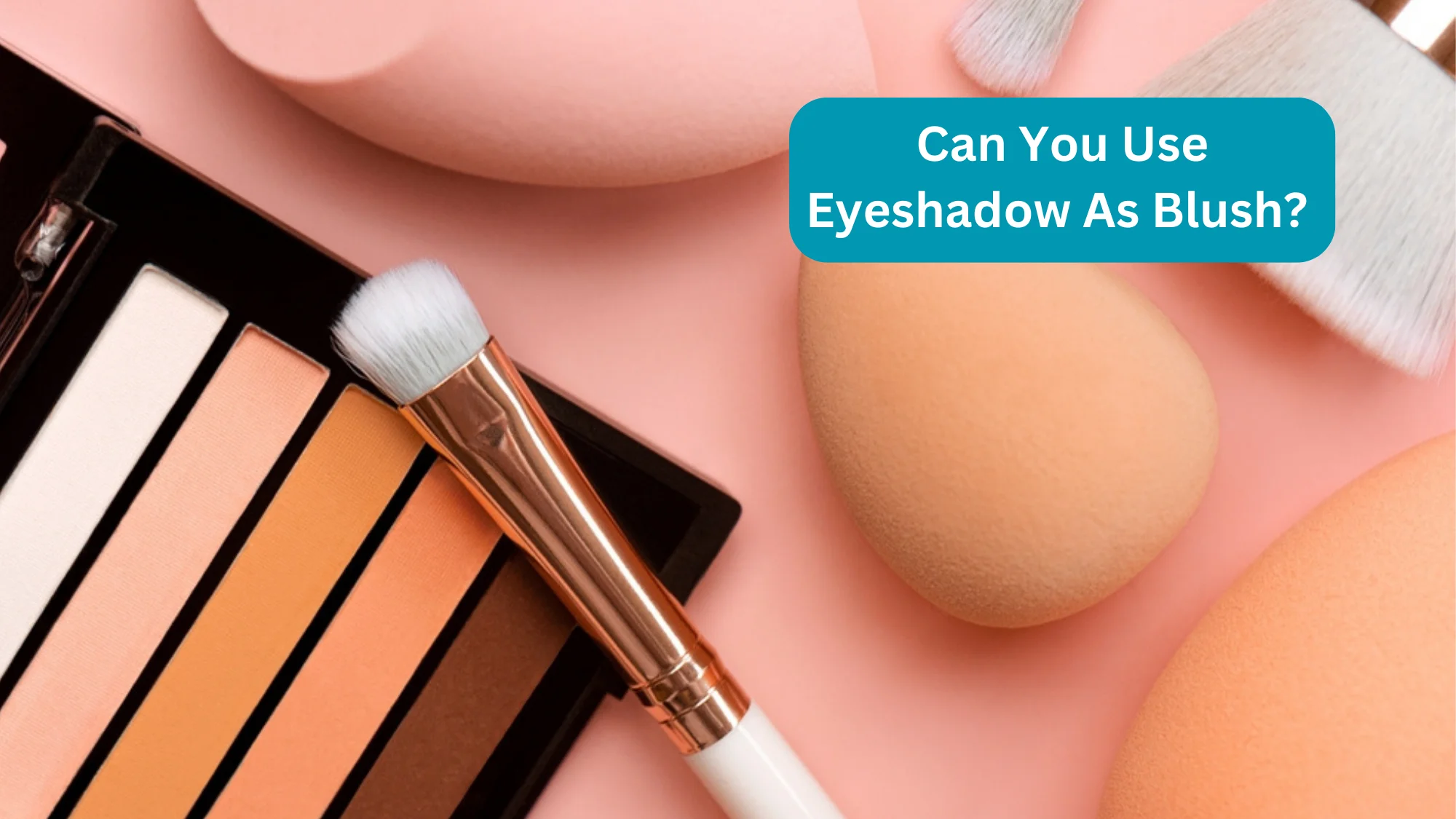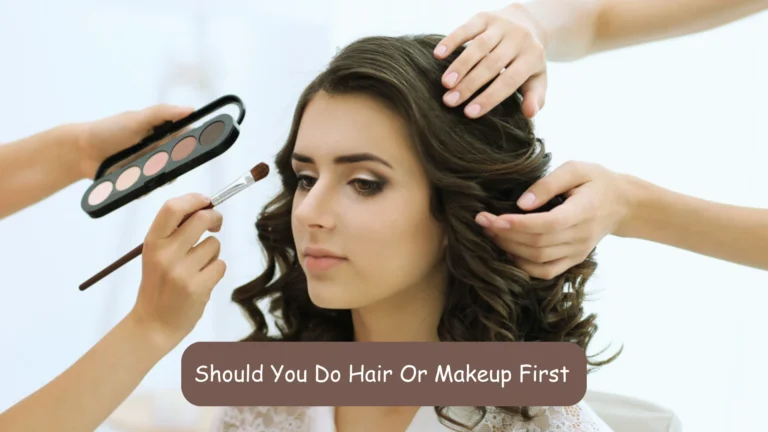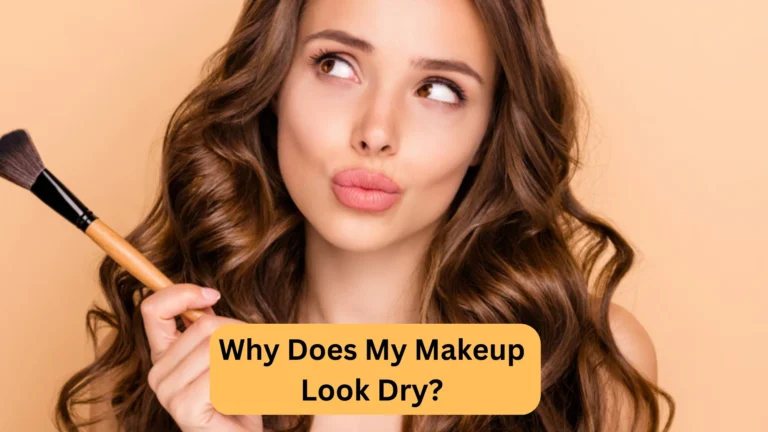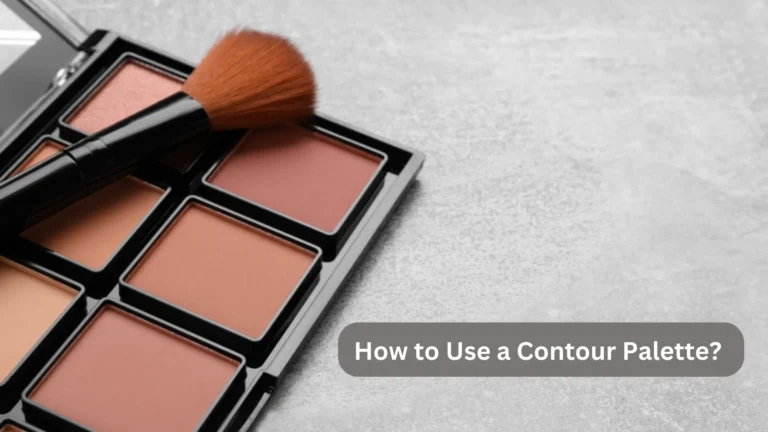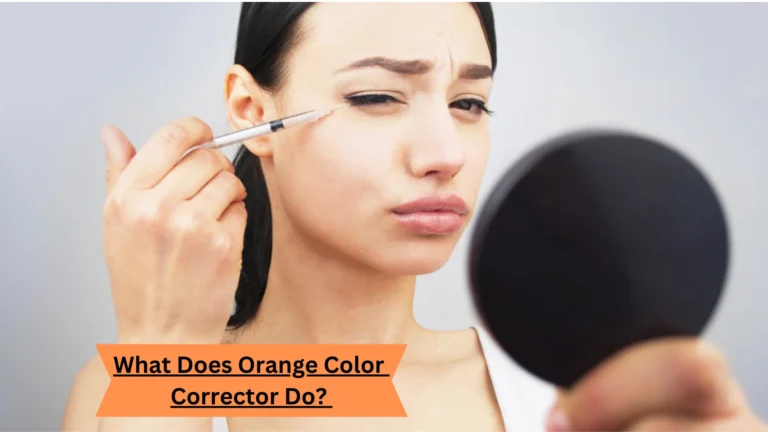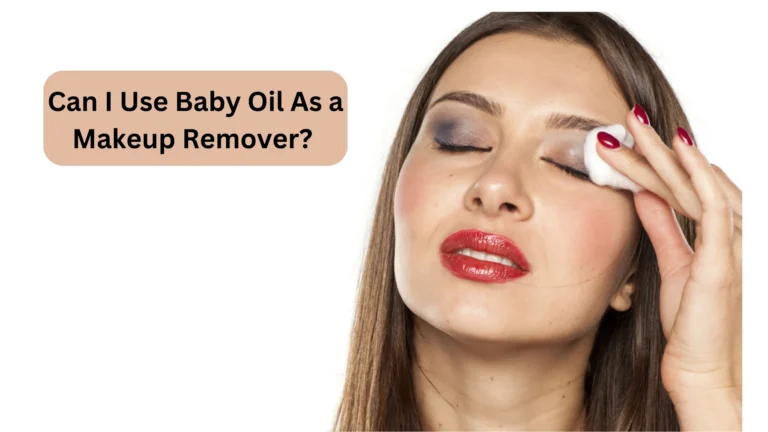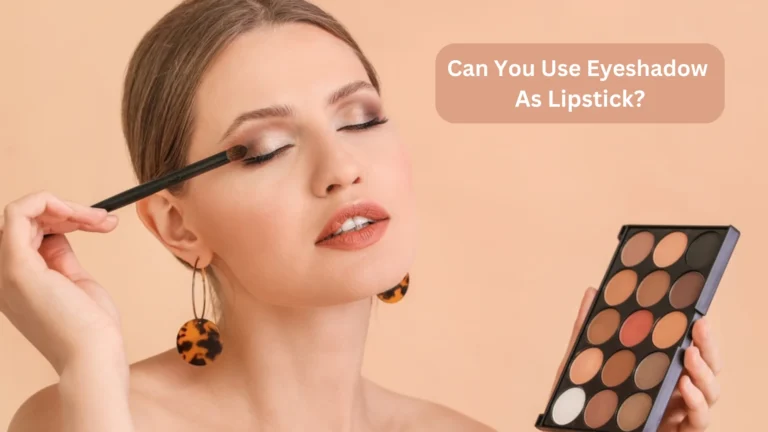Can You Use Eyeshadow As A Blush? Here’s What Experts Say!
In the world of cosmetics, creativity knows no bounds, and beauty enthusiasts often ponder the possibility of using eyeshadow as a blush. But the question here is, can you use eyeshadow as a blush? Is it safe?
Yes, you can use eyeshadow as a blush. Many people do this to save money on makeup or get more creative with their looks. Eyeshadows are often formulated with pigments that are safe for the eyes and can also be used on other areas of the face, including the cheeks, as blush.
In this discussion, I will discuss the benefits of using eyeshadow as a blush, the differences between these two products, and the drawbacks. So, let’s get started!
Can You Use Eyeshadow As A Blush?
Yes, using eyeshadow as a blush in certain situations is possible. According to Mario Dedivanovic, celebrity makeup artist, “Eyeshadows are a great way to add depth to your cheeks. Simply dust a sparkly hue on the apples of your cheeks and blend it out. This will result in a more natural-looking glow.”
Eyeshadow and blush are both makeup products that are used to add color to the face. However, there are some key differences between the two products. Eyeshadow is typically more pigmented than blush, and it is also available in a wider range of colors.
Blush, on the other hand, is designed to be more sheer and buildable, and it is typically available in a more limited range of colors.
Eyeshadows works fine on cheeks too but only if you apply them right. Here’s what to consider before applying eyeshadow on cheeks.
Color Selection
Choose eyeshadow shades that are suitable for blush. Typically, warmer tones such as peach, coral, or pink shades work well as blushes.
Texture And Finish
Opt for eyeshadows with a satin or matte finish rather than shimmery or glittery ones. Matte eyeshadows tend to provide a more natural-looking blush effect.
Pigmentation
Make sure the eyeshadow you’re using has good pigmentation. It should be able to provide enough color when applied lightly to the cheeks.
Application Technique
Use a soft, fluffy blush brush to pick up a small amount of eyeshadow. Tap off any excess before applying it to your cheeks. Start with a light application and build up the color gradually as needed.
Blending
Blend the eyeshadow blush onto the apples of your cheeks, sweeping it upward toward your temples for a natural-looking flush.
While using eyeshadow as blush occasionally is generally safe, if you have sensitive skin or are prone to allergies, it’s a good idea to test the product on a small patch of skin first to ensure you don’t experience any adverse reactions.
Additionally, using eyeshadow as blush shouldn’t replace using a proper blush product formulated for the cheeks in the long term. Now, Let’s discuss some benefits of using eyeshadow as a blush below:
What Are The Benefits Of Using Eyeshadow As a Blush?
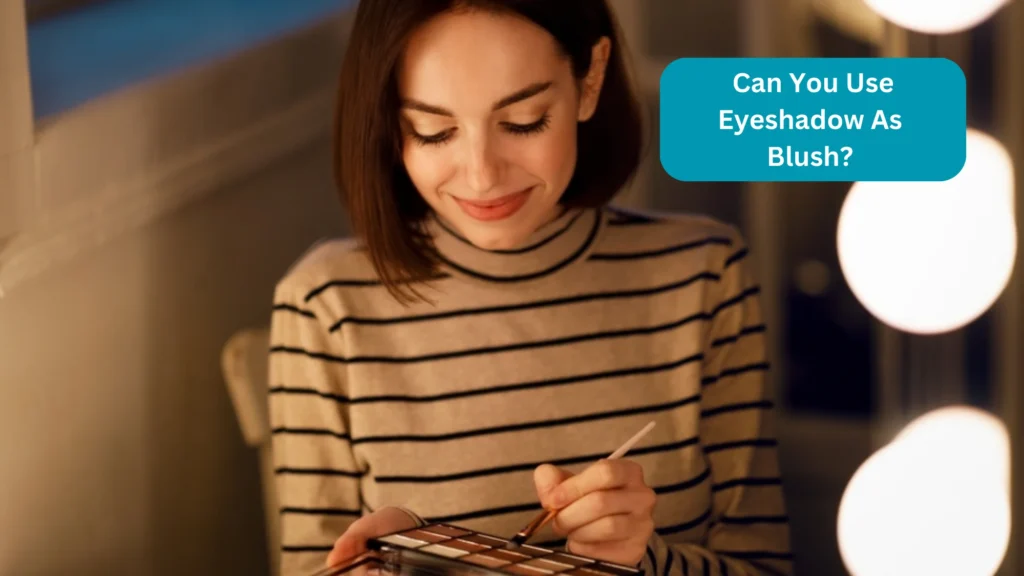
Using eyeshadow as a blush can have certain benefits. “As eyeshadows are so flexible, I like to use them as blushes. You can use them to achieve a natural flush or a more dramatic appearance. Because they are often less expensive than blushes, you can try out several colors without breaking the budget.” says Huda Kattan, founder of Huda Beauty. So, if you decide to use eyeshadow as a blush, here are some potential benefits:
Color Variety
Eyeshadows come in a wide range of colors, finishes, and textures. By using eyeshadow as a blush, you can access a greater variety of shades that may not be available in traditional blush formulas. This allows you to experiment with different colors and create unique looks.
Cost-Effective
If you already have an eyeshadow palette with shades that could double as blush colors, using eyeshadow as a blush can be a cost-effective option. It saves you from purchasing a particular blush product.
Portability
Eyeshadow palettes are often compact and travel-friendly. If you’re on the go and don’t want to carry multiple makeup products, using eyeshadow as a blush allows you to utilize the shades in your palette for eye and cheek makeup, reducing the number of items in your makeup bag.
Blending Capabilities
Eyeshadows are typically formulated to blend easily on the delicate skin around the eyes. This can make them easier to blend and diffuse on the cheeks, giving you a more seamless and natural-looking application.
Layering and Customization
Eyeshadows often offer buildable coverage, allowing you to control the intensity of color on your cheeks. You can apply a sheer layer for a subtle flush or build up the color for a dramatic effect. This flexibility allows for greater customization and experimentation.
Downsides of Using Eyeshadow As a Blush
Using eyeshadow as a blush can have several downsides and may not be the best option. Here are a few reasons why:
Pigmentation and Texture
Eyeshadows are formulated differently from blushes. They often have a higher pigment concentration and a different texture, which can make them more intense and harder to blend on the cheeks. This can result in a patchy or uneven application, leading to an unnatural or clown-like appearance.
Ingredients and Safety
Eyeshadows are specifically designed for use around the eyes, where the skin is more delicate. They may contain ingredients not intended for use on the cheeks, which could irritate or sensitize the skin. Additionally, some eyeshadows may contain ingredients not considered safe for use on other areas of the face.
Color Selection
Eyeshadows come in a wide range of colors, but they are primarily formulated for use on the eyes, where vibrant and bold shades are more common. This can make it challenging to find suitable colors for blush that complement your skin tone and provide a natural-looking flush.
Longevity and Wear
Blushes are formulated to adhere to the skin and have better staying power throughout the day. On the other hand, Eyeshadows may not have the same longevity on the cheeks and can fade or become patchy more quickly, requiring frequent touch-ups.
Makeup Application Techniques
The application techniques for eyeshadow and blush are different. Eyeshadow is typically applied with smaller brushes, while blush is often applied with larger, fluffier brushes. Using a smaller eyeshadow brush for blush application may produce a more concentrated and harsh appearance.
Does Eyeshadow Last Longer Than Blush On The Cheeks?
Yes, eyeshadow typically lasts longer than blush on the cheeks. This is because eyeshadow is typically made with more pigment and is designed to be more durable. Blush, on the other hand, is typically made with less pigment and is designed to be more sheer and buildable.
Eyeshadow is also applied with a primer, which helps to set the color and make it last longer. Blush, on the other hand, is typically applied without a primer.
Moreover, the skin on the eyelids is typically oilier than the skin on the cheeks. This means that eyeshadow is less likely to be rubbed off or fade throughout the day.
If you are looking for a makeup product that will last all day, eyeshadow is a good option. However, if you are looking for a makeup product that is sheer and buildable, blush is a better choice.
Additionally, eyeshadows often contain ingredients that enhance longevity, such as binders, fillers, and specialized pigments.
Blush formulations are often more lightweight and designed to have a more sheer and blendable texture, making them more prone to fading or wearing off throughout the day.
That being said, various factors can affect the longevity of both eyeshadow and blush, such as the quality of the product, the use of primers or setting sprays, and the individual’s skin type and activity level.
Using an eyeshadow or face primer before applying either product can help improve their longevity. Setting the makeup with a setting spray can also help extend its wear time.
How Do You Apply Powder Eyeshadow as Blush?
While powder eyeshadow can be used as a blush in a pinch, it’s important to note that the texture and formulation of eyeshadow may not work as effectively on the cheeks as a dedicated blush product. However, if you still want to try using powder eyeshadow as blush, here’s a step-by-step guide:
- Opt for shades similar to traditional blush colors, such as pinks, corals, or mauves. Matte or satin finishes work better for this purpose.
- Start by applying your regular foundation or face makeup to create a smooth canvas for the eyeshadow application. Ensure your skin is clean and moisturized beforehand.
- Instead of an eyeshadow brush, go for a blush brush with soft, fluffy bristles. This brush will help distribute the color evenly on your cheeks.
- Lightly swirl your brush into the eyeshadow pan, ensuring you tap off any excess to prevent intense color payoff. It’s better to start with a small amount and build up gradually.
- Smile to identify the apples on your cheeks, and gently sweep the eyeshadow onto the apples in a circular or upward motion. Blend it out towards your temples for a natural-looking flush. Remember to start with a sheer application and add more products if needed.
- Use your brush to blend and diffuse the color on your cheeks to avoid any harsh lines or patches. This step is crucial to create a seamless finish.
- Assess the intensity of the color on your cheeks and add more eyeshadow if desired. Repeat steps 5 and 6 until you achieve the desired look.
- To help your blush last longer, lightly dust a translucent or setting powder over your cheeks.
How Do You Apply Cream Eyeshadow as a Blush?
Cream eyeshadow can be used as a blush to create a natural and dewy flush of color on your cheeks. Here’s how you can apply cream eyeshadow as a blush:
- Select a cream eyeshadow color that complements your skin tone and desired blush shade. Opt for shades that are more neutral or pinkish, as they work well as blush colors.
- Start with clean and moisturized skin. Apply your regular skincare routine, including moisturizer and primer, if desired. This will help create a smooth base for the cream eyeshadow.
- Take a small amount of the cream eyeshadow on the back of your hand or the tip of your finger. Gently rub the product between your fingertips to warm it up. This makes it easier to blend and ensures a more seamless application.
- Use your fingertips or a clean makeup brush to apply the cream eyeshadow onto the apples of your cheeks. Start with a small amount of product and gradually build the color until you achieve the desired intensity. Lightly pat or blend the cream eyeshadow onto your cheeks, moving in a circular motion or upward strokes for a natural-looking finish.
- Take your time to blend the cream eyeshadow into your skin to create a smooth and diffused effect. You can use a clean makeup brush, a blending sponge, or your fingertips to blend the edges and ensure no harsh lines.
- If you want to prolong the wear and set the cream eyeshadow blush, lightly dust a translucent or setting powder over your cheeks. This step is optional but can help prevent the cream product from smudging or fading throughout the day.
- Finish your makeup look as desired, including applying foundation, concealer, and other makeup products. You can also add a highlighter or bronzer to enhance your overall complexion and add dimension.
What Eyeshadow Colors Go With What Skin Tone?
When it comes to choosing eyeshadow colors that complement your skin tone, there are some general guidelines you can follow. However, it’s important to note that personal preference and experimentation should also be considered. Here are some suggestions for eyeshadow colors based on different skin tones:
Fair Skin Tone
Neutrals: Soft pinks, beige, taupe, light browns, and ivory shades.
Cool Tones: Lavender, lilac, light blues, and grays.
Warm Tones: Peach, light gold, and soft oranges.
Light to Medium Skin Tone
Neutrals: Warm browns, light bronzes, champagne, and light taupes.
Cool Tones: Soft purples, mauves, dusty roses, and slate grays.
Warm Tones: Golden browns, copper, bronze, and warm terracottas.
Medium to Olive Skin Tone
Neutrals: Medium browns, taupes, tans, and caramel shades.
Cool Tones: Plum, violet, deep purples, and dark blues.
Warm Tones: Burnt oranges, rusty browns, deep golds, and rich bronzes.
Deep to Dark Skin Tone
Neutrals: Chocolate browns, deep taupes, and dark greys.
Cool Tones: Deep purples, plums, rich blues, and charcoal shades.
Warm Tones: Burgundy, warm browns, copper, and deep gold.
What Else Can I Do With Eyeshadow?
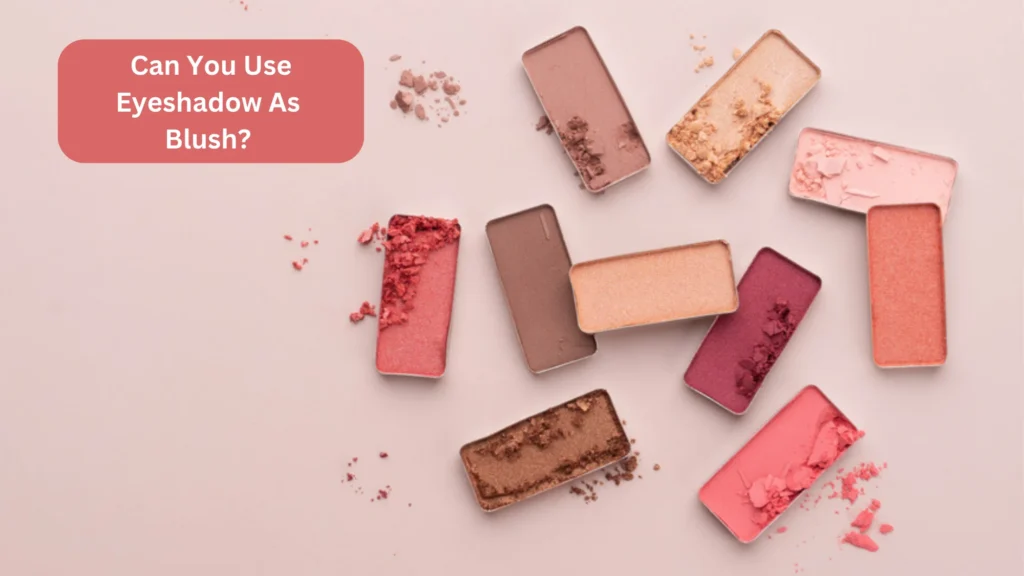
Eyeshadow is a versatile cosmetic product that can be used creatively beyond its traditional application on the eyelids. Here are a few ideas on what else you can do with eyeshadow:
Eyeliner
Use a small, angled brush and dampen it slightly. Then, dip it into your preferred eyeshadow shade and apply it along your lash line to create a soft, smudged eyeliner look.
Brow Enhancer
If you have sparse eyebrows or want to define them further, choose an eyeshadow shade that matches your brow color. Use an angled brush to fill your brows with short, feathery strokes for a natural look.
Blush Or Contour
Some eyeshadow shades can double up as blush or contour powders. For a natural flush or to contour your face, choose a matte eyeshadow shade that complements your skin tone and apply it to the apples of your cheeks or along your cheekbones.
Lip Color
Transform your eyeshadow into a unique lip color by mixing it with a clear lip balm or gloss. Scrape a small amount of eyeshadow onto a palette, mix it with the lip balm or gloss, and apply the custom shade to your lips using a lip brush.
Nail Art
Crush your favorite eyeshadow shades into a fine powder and mix them with clear nail polish or a top coat. Create custom nail polishes with unique colors and finishes, or use the eyeshadow powder as a nail art pigment to create intricate designs.
Body Shimmer
If you have shimmery eyeshadow shades, you can use them to add a touch of sparkle to your body. Apply a small amount of the eyeshadow to your collarbones, shoulders, or legs for a radiant glow.
Wrapping Up
To sum up, while it is possible to use eyeshadow as blush, it is not the ideal option. Eyeshadows and blushes are formulated differently, considering the specific needs and characteristics of the respective face part they are intended for. Using eyeshadow as blush may result in a less blended or uneven application, and the colors may not translate well onto the cheeks. It is always best to use products specifically designed for the intended purpose to achieve the desired results and maintain the overall health and safety of the skin.
You Might Also Like: Can You Use Eyeshadow As Lipstick? The Ultimate Answer!
FAQs
What Type of Eyeshadow Should I Use As Blush?
It is recommended to use a matte or satin finish eyeshadow for blush. Avoid shimmery or glittery eyeshadows, which can be too much for the cheeks.
What Color Eyeshadow Should I Use As A Blush?
The color of eyeshadow you use as blush will depend on your skin tone. For fair skin tones, try using a peachy or pink eyeshadow. For medium skin tones, try using a coral or berry eyeshadow. For dark skin tones, try using a plum or mocha eyeshadow.
How Do I Apply Eyeshadow As a Blush?
To apply eyeshadow as blush, use a fluffy brush to pick up a small amount of product. Tap off any excess product, and then apply the eyeshadow to the apples of your cheeks. Blend the eyeshadow upwards towards your temples, then blend it towards your hairline.
How Much Eyeshadow Should I Use As A Blush?
It is essential to use a light hand when applying eyeshadow as blush. A good rule of thumb is to use the amount of eyeshadow that you would use to fill the tip of your pinky finger. Too much eyeshadow can look clownish. Start with a small product, and then add more if needed.
